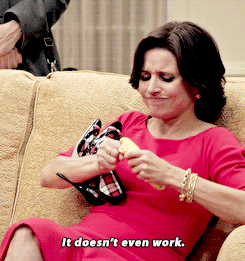What is Participatory Design and why is it important?
User testing has become more and more popular over the last couple of years and that’s great! However, user testing is usually done on a more or less finished product and focuses primarily on testing interactions and performing tasks. What if we want to test something earlier in the process? This is where user participatory design (PD) comes into play.
PD is an iterative design approach that aims to develop an understanding of the user needs.
Unlike user testing, it involves the user all the way from idea to finished product. Basically, PD is used to find out what your product should be and what it should do. You then use user testing to make sure that people can use and understand the product without trouble.

So how does it work? Let's use an example:
Let's say that people only buy apples and oranges. For some reason we want people to buy more bananas. Now, if we only make the bananas even tastier and healthier, there’s no doubt people will buy them, right? Well no, not necessarily.
In order to find out why people don’t buy bananas we invite a few people from our target group to be a part of our design process. We set up workshops in which the participants give us information and input about what role the bananas play in their lives. During the workshop it becomes clear that there’s nothing wrong with the taste or health aspects of the bananas. It’s the fact that people can’t put bananas in their bags without mushing them on their way to work that is the deciding factor.
Houston, we’ve got a breakthrough!
If we wouldn’t have included the users this early in the process, we’d be working on tastier bananas by now, completely missing the real issue. This is one of the biggest strengths of participatory design.
Now that we know that the problem is protecting bananas and not enhancing the flavour, we can get to work. Try to piece together all the information that comes out of the workshops and group it up into themes. Once you’ve got something to show, bring it to the participants to their feedback. There’s usually a layer of politeness or even unawareness between what is being said and what it being felt so try to read between the lines. Did they say the banana protector felt a little heavy? Then maybe they won’t be carrying it with them and you’ll need to give the material a second thought. Keep iterating like this until you’re both happy!
When working with user participatory design there are a few things to keep in mind in order for it to be successful:
- You are not your user. It’s easy to make assumptions about what the users want and need. But those assumptions are based on your life and not theirs, so make sure you actually ask them, even though it may be things that seem obvious to you.
- Don’t rush through it. You may feel like you already have a great idea and you just want to get started. You may be right, but if you could make sure, why wouldn’t you? If it turns out your idea wasn’t as good as you initially thought - great, you just saved loads of time and money not working on the wrong thing. If the idea was indeed great - awesome, you’ll now have an easier time pitching and defending your idea to investors or clients and you’ll have an easier time making design decisions further down the line with the new knowledge you’ve acquired.
- Involve as many disciplines as possible. Since we’re trying to understand the user journey in its entirety and want to include as many aspects as possible, a cross discipline team is to be preferred. People with another expertise are likely to have picked up o
- Let go of your ego. Sometimes it’s hard to let go of an idea you have and it can feel like the participants are working against you. However, it’s important that even if you don’t agree with their opinion, you look into why they feel that way. There may be something bigger hidden here.
- Don’t “outsource” the creative process to the participants. This is an important one. It’s easy to fall into the trap of asking your participants “what do you want?” and then you just start building whatever they answered. The problem is that the participants often don’t know what they want when it comes to a product that doesn’t yet exist. It can also be extremely hard to answer such a big and broad question. You’re the expert in your field and the participants are there to help you do your job, not do your job for you. So instead of asking “what do you want in a banana?”, ask them things like:
- Why are you eating fruit?
- When are you eating fruit?
- What do you think about when you select fruits at the grocery store?
- Are there any problems with bananas? If so what?
- Why do you pick apples and oranges instead of bananas?
It’s then up to you to come up with some ideas that you can work on refining together.
Participatory design processes may seem like a hassle (and sometimes they are) but it’s usually worth the time and effort. If done right you’ll be taking smaller risks in terms of whether or not your product will fly and you’ll spend less time patching and fixing all the things you got wrong. That’s a huge plus, as making changes becomes more expensive and time consuming the further along you go.
I hope you’ve found this post helpful and that I’ve managed to spark an interest in participatory design and why it’s so important. If not - maybe you’d at least like to buy a banana cover?
